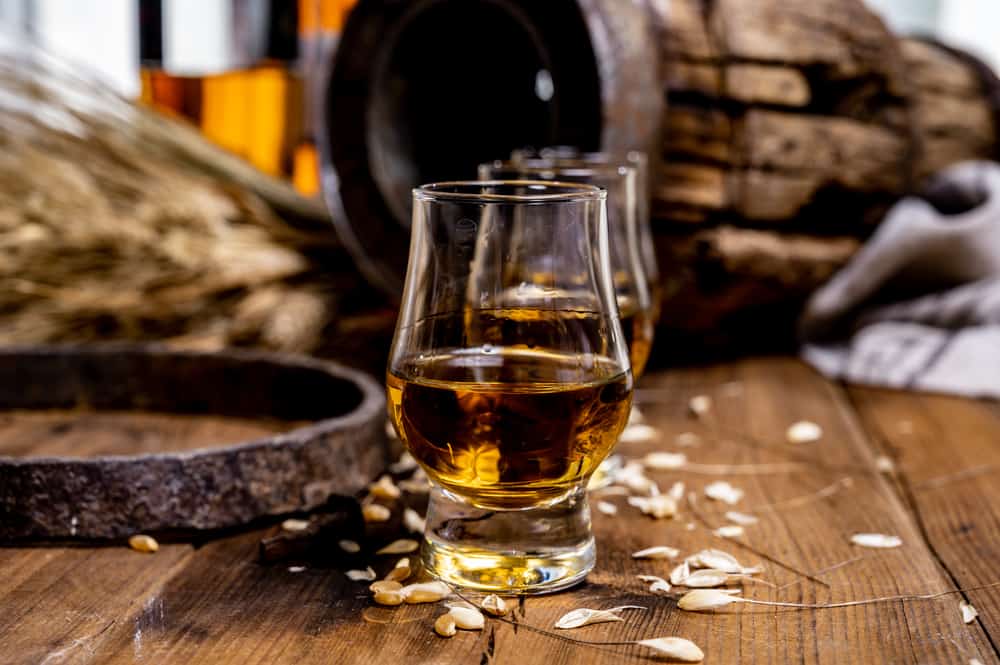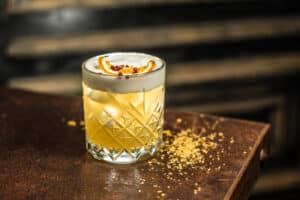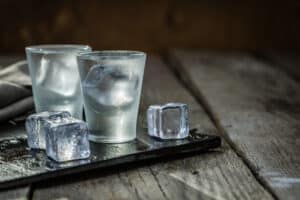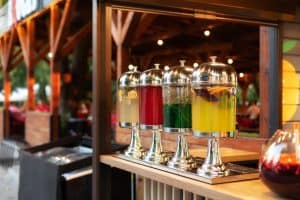
Making whiskey starts with the choice of ingredients. Depending on the flavor profile that the distiller is aiming for, different grains may be used.
You will gain precious knowledge when you know what was used to produce the tipple you are pouring into your glass. It allows you to appreciate, recognize, and savor your drink like never before.
So, what is used to make whiskey?
Whiskey starts its journey as a base of corn, rye, wheat grain, or barley. These, along with the choice of barrel, define whiskey’s taste profile and aroma. Water and yeast are also needed to start the fermentation process.
In this article, we will look at all the things that are used to make whiskey, from the four different grains to different types of barrels. This will heighten your understanding of how different grains and wooden casks influence whiskey’s taste.
What Is Used To Make Whiskey?
The process of making whiskey has been around for centuries, and the ingredients used to make this popular alcoholic beverage are relatively simple. Let’s take a look at all the ingredients used to make whiskey.
Water

It may seem obvious, but water is required to ferment the chosen grain. Water is one of the essential factors in making whiskey—avoiding impurities such as iron and chlorine are the driving forces in seeking water suitable for distilling whiskey.
Kentucky, Maryland, Pennsylvania, and Indiana are rich in limestone, adding carbonates to the water, making it taste brackish or salty. Many distilleries are next to rivers or lakes to get the cleanest possible water.
Yeast

To ferment the chosen grain(s), they must be mixed with water and yeast. This is where the choice of yeast plays a significant role—each distillery will have its preferences depending on the product they produce.
During the fermentation, the yeast uses the sugars from the grain and converts them into alcohol and amino acids. This is the start of flavor development. Longer fermentation periods produce more complex amino acids and congeners and, thus, more complex flavor profiles.
The Grains

Whiskey starts its journey as one of four grains. Each of these grains will impart its unique flavor profile. The grains are:
- Barley
- Corn
- Rye
- Wheat grain
Scottish whisky is a single malt made purely from malted barley, which is dried in a dryer or kiln. Traditionally, dried by peat fires below the malting floor where the smoke filters through and dries the barley—from there, the reference to a smoky peat flavor.
Irish whiskey can be made from any combination of cereal grains. This kind of whiskey is produced predominantly in Ireland and the USA.
The word whisky comes from the Scottish Gaelic term usquebaugh, meaning the water of life. Uisge is water, while beatha means life.
In modern terms, whisky is from Scotland (including Canada and Japan-inspired by Scottish whisky), while whiskey is from Ireland and the USA. Irish immigrants in the USA also took their spelling, whiskey, with them as they set up their stills in their newly adopted country.
Barley
We need barley to start the fermentation process when you produce whiskey, and all whiskeys will contain a small percentage of barley.
Barley needs to be malted before the fermentation process starts—they soak it in water until it is saturated. Then they spread the barley out and keep it moist until germination, which produces an enzyme, amylase, which converts the barley into maltose—a type of sugar.
Corn
American distillers started using corn for whiskey around the mid-1700s. We also refer to corn as maize; the primary grain used when producing American whiskeys, primarily bourbon.
US law states that American whiskey must make up at least 51% corn. Moonshine is an unaged white whiskey made entirely from corn, or corn and sugar. Corn produces a vanilla and popcorn taste.
Rye
Again, US federal law states to be considered a rye whiskey, it needs to contain at least 51% rye. Rye is related to barley and wheat as well. Law does not regulate the Canadian counterpart. Thus, the brands can label it as rye whiskey while containing little or no rye.
Wheat
We mostly find wheat whiskey in the US, but it is not subjected to federal requirements compared to rye and corn whiskey, which needs to be solely on US soil. Although wheat is less associated with whiskey because it lacks a robust taste profile compared to the other three grains, it can still produce whiskey.
We have looked at the different grains usually used to make whiskey. Now, we need to look at another integral part—the distillation equipment.
Distillation Pots and Stills

Before whiskey becomes aqua vita—the water of life—the impurities must be removed through distillation.
Remember the fermenting yeast-water-grain trilogy we mentioned at the beginning?
The first round of distillation separates the alcohol and lower-boiling-point liquids from the fermented ‘wash’ by heating it to just under boiling point (alcohol vaporizes at 173ºF) in either a pot still or a continuous still. A second round will produce the whiskey, which is matured in barrels.
Barrels or Casks

These two terms are used interchangeably. A key distinction between Scottish and American whisk(e)y producers is that bourbon producers only use a barrel once, since their Scottish counterparts will use the same barrels multiple times for maturing whisky.
Most Scottish whisky distillers use American white oak barrels. Some distilleries also use sherry casks, which are made from European oak.
Whiskey matures in barrels for at least two years, but usually between three and four years, or up to fifteen years. A barrel will be used if the distillery deems it viable—after each batch of Scotch, barrels are inspected to check how far the whisky has penetrated the wood.
When the liquid has penetrated almost all the way through the barrel, it is unfit and discarded.
Conclusion
They make whiskey from water, yeast, and selected grains. Fermentation develops the flavors, and during the distillation process in a still, the ‘raw’ whiskey is produced. Distilleries age raw whiskey in oak barrels before being bottled and sold.









